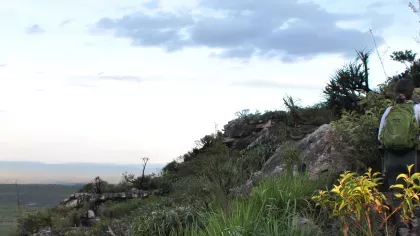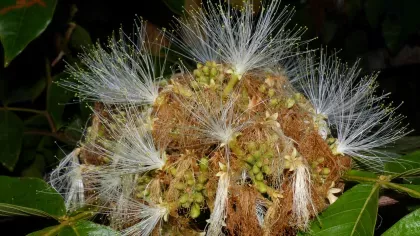9 July 2020
The 'umbrella plant' in New Guinea
More than a houseplant...

Most of us are familiar with Schefflera as the 'umbrella plant', a low-maintenance houseplant. Its delicate green leaves gently droop down from the stalk, resembling an umbrella.
We've recently been working on the different species of Schefflera that occur in the wild on the island of New Guinea and have been trying to find out how threatened they are by making IUCN (International Union for the Conservation of Nature) Red List extinction risk assessments.

More than just a house plant
These are fascinating plants and are often small trees or shrubs but they may also grow on other trees (an epiphyte), sometimes quite high up.
They are found in many habitats: montane and lowland forest, swamp forest, scrub, and thickets in undisturbed and disturbed areas.
Schefflera pagiophylla, for example, grows in sub-alpine shrubberies and grassland up to 3,800m above sea level and S. gjellerupii, known only from a small area of the northern coast of New Guinea, was found growing on rocks on the shoreline.
It's likely that Schefflera species are pollinated by insects and that birds mainly help to disperse the fruits and seed.
Birds of Paradise are attracted to the nectar-producing flowers and in S. thaumasiantha the very large inflorescence can weigh up to 20kg.
The fruits may be dispersed by parrots and possibly also by the Raggiana bird-of-paradise (Paradisaea raggiana).
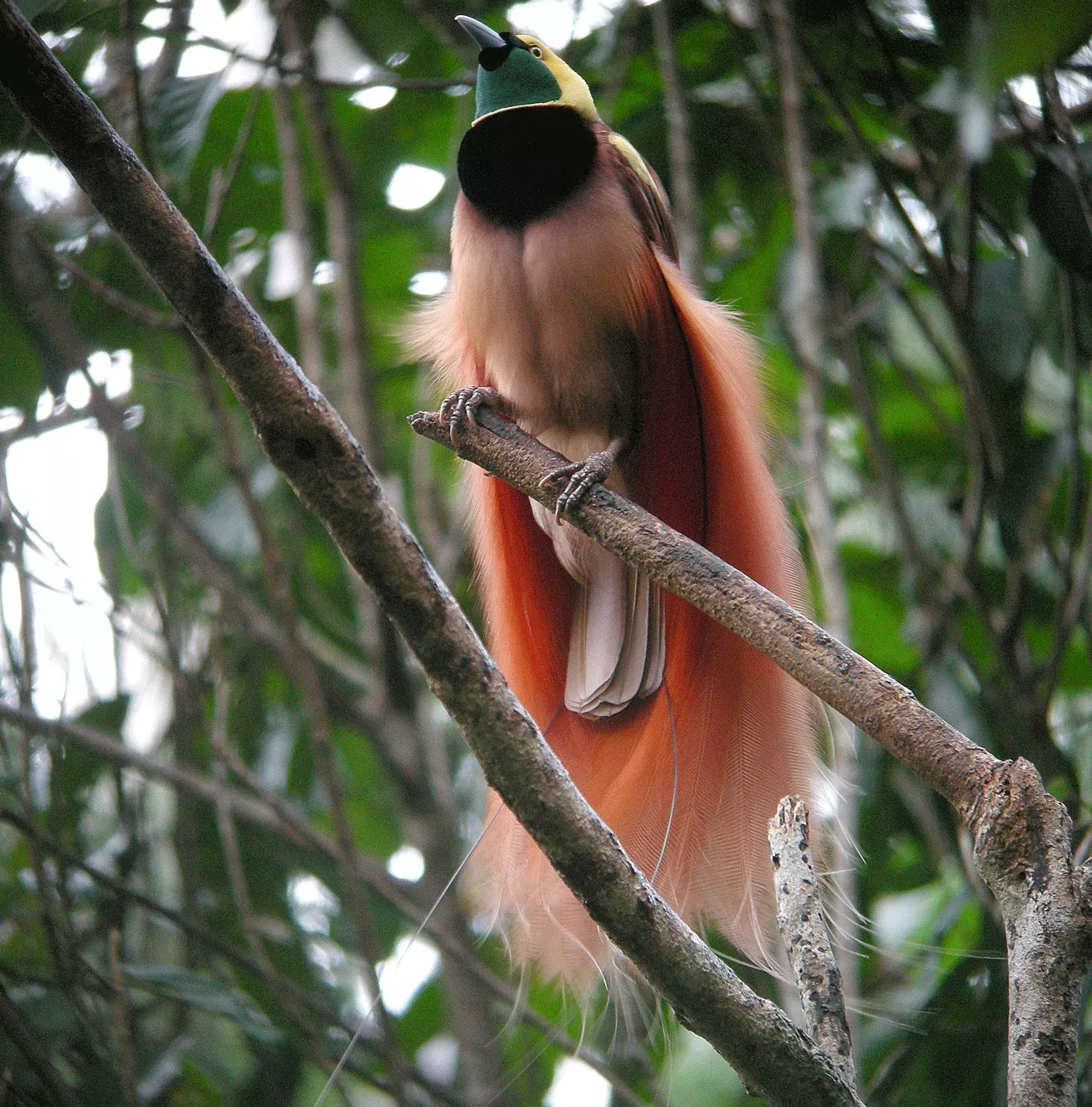
The local people of the Ok Tedi area look out for S. eriocephala and S. setulosa when hunting for birds, as they know that birds are frequent visitors to the plants.
Some Schefflera species are used locally for medicinal purposes, or for their timber. Some have unusual uses, for example, the bark of S. forbesii is noted to be used in traditional wig decoration as a magic-adjunct.
David Frodin - Schefflera expert
Sadly, our very knowledgeable Schefflera expert David Frodin passed away last summer, but earlier in the year he was able to share some of the information about these species, which he had meticulously gathered over a number of years.
It is a tribute to this dedicated botanist that all this information is available, and it is just a small fraction of his botanical legacy.
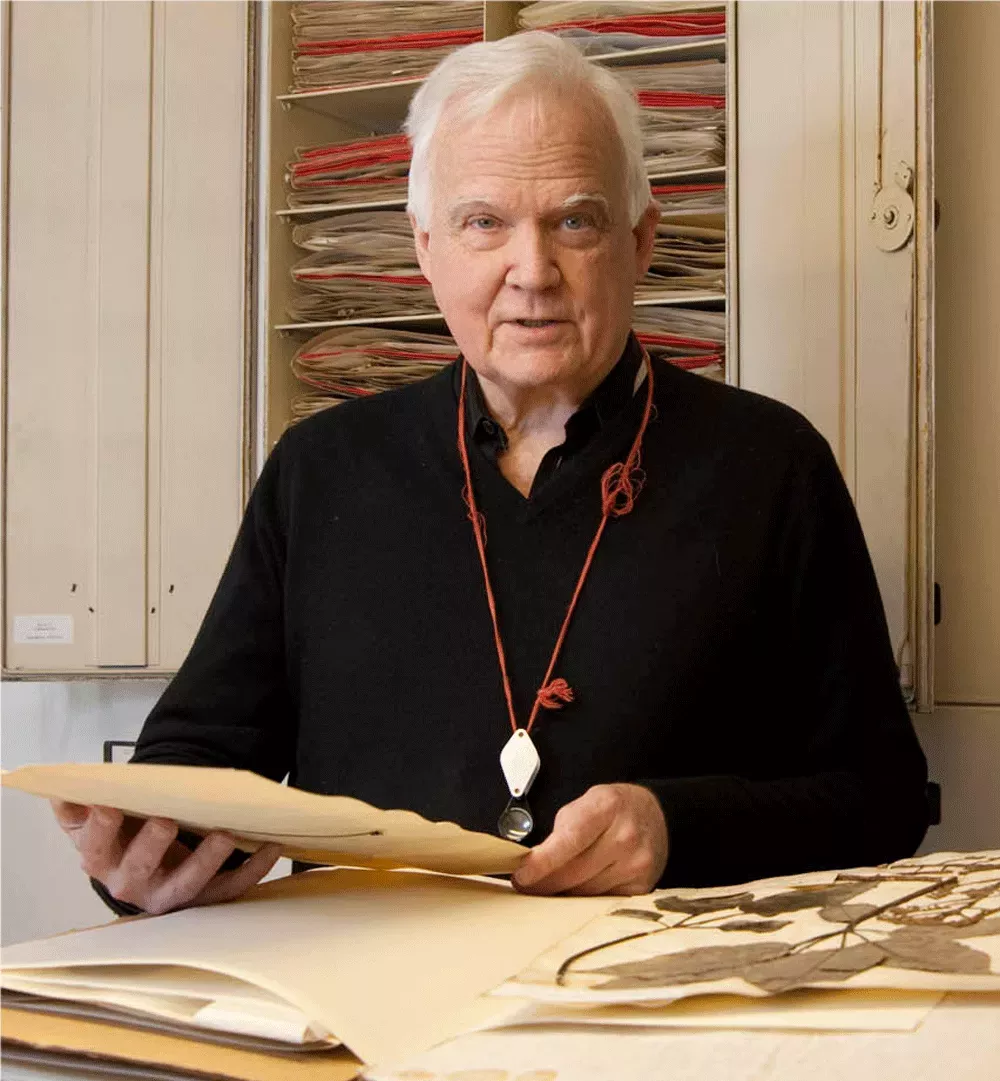
Assessing the Umbrella plant
Using David’s data and analysis and other resources and research, we've managed to make extinction risk assessments for 69 different species of Schefflera in New Guinea.
Provisionally we have found that about one third can be classified as Least Concern (not currently considered at risk of extinction), one third as Data Deficient (insufficient information to assign a category) and one third as Threatened or Near Threatened.
Those that are Data Deficient could also be under threat, we just don’t know. Some haven’t been seen for more than 100 years, such as S. polychaeta, which is only known from one collection (the type specimen) made near Alkmaar, Papua Province, in 1907.
Those that are assessed as threatened often have very small ranges and are subject to ongoing or future threats, for example from logging, mining, conversion of habitat for agriculture or fires.
In New Guinea, climate change has led to an increase in the frequency and severity of drought, which makes the vegetation more at risk of fire and significant areas of montane forest have been burnt.
New Guinea still has much undisturbed forest and there are some conservation measures in place, although threats are increasing.
Our study of these plants highlights the fact that now is the time to make people aware of these threats. Such knowledge can inform conservation action to ensure that they continue to thrive in New Guinea’s rich and unique forest habitats.
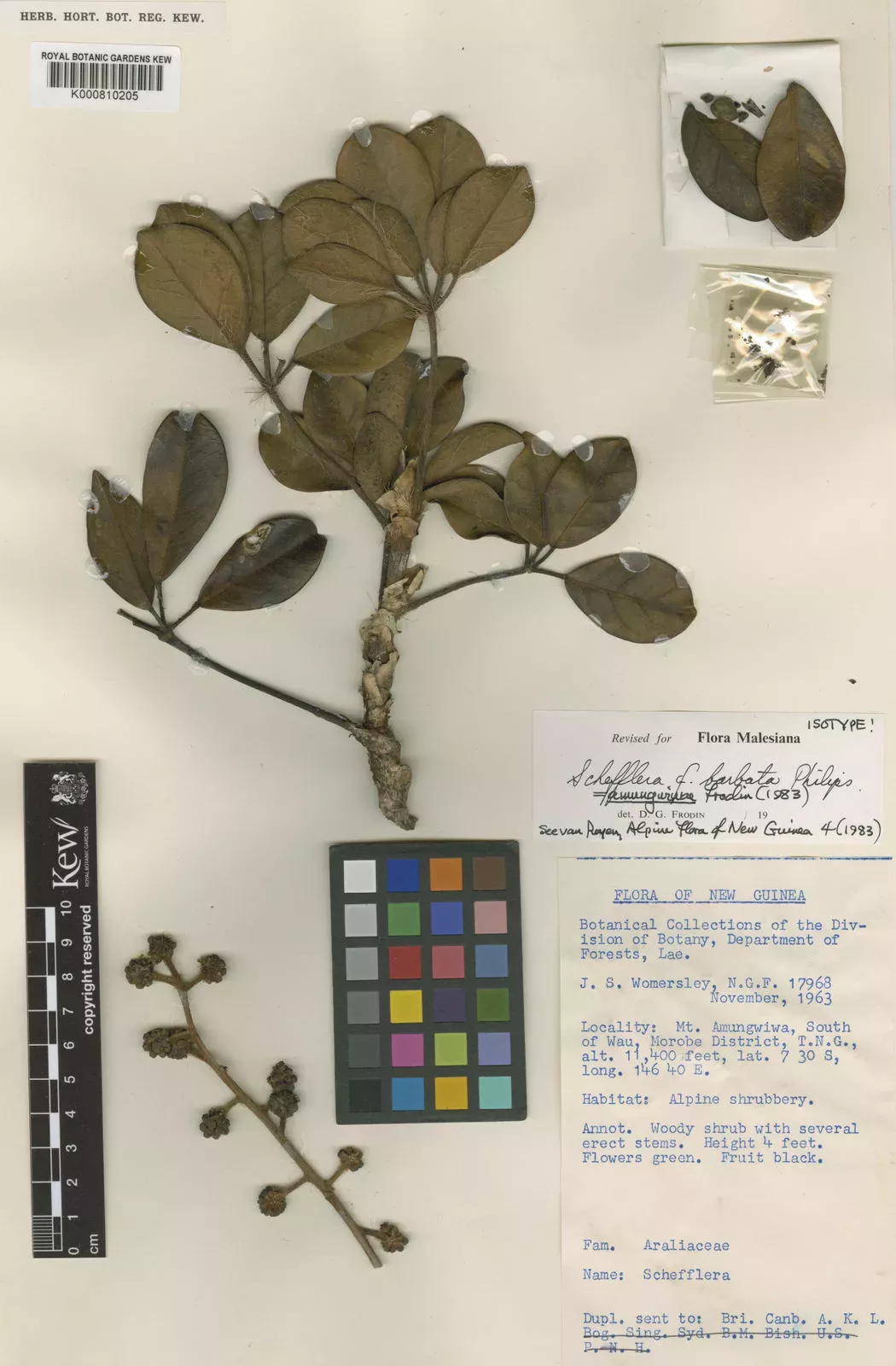
References
Gardner, R.O. 2010 Plant Names of the Kalam (Upper Kaironk Valley, Schrader range, Papua New Guinea) Records of the Auckland Museum 47 p5-50
Hyndman, D.C. and Frodin, D.G. 1980 Ethnobotany of Schefflera in the Ok Tedi Region, Papua New Guinea, Ethnomedicine VI (1-4) p101-126
Puad, A.S.A., Frodin, D.G. and Barkman, T.J. 2018 The Genus Schefflera in Sabah, Malaysian Borneo. Kota Kinabalu. Natural History Publications, UNIMAS, RBG Kew


